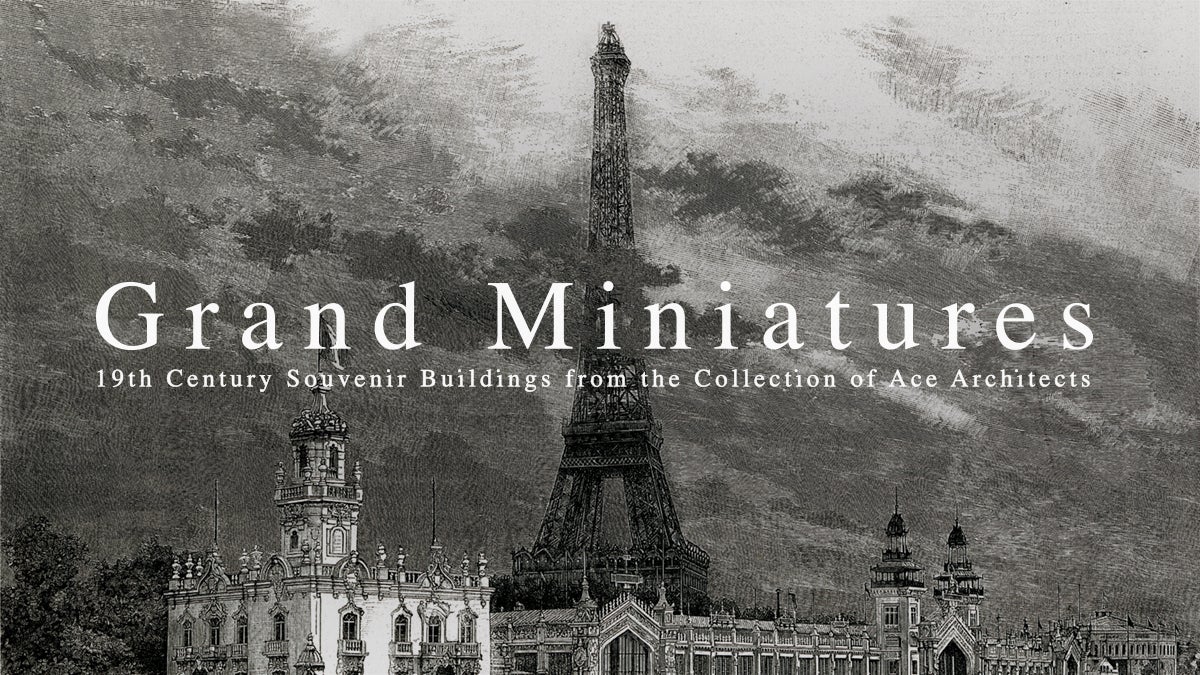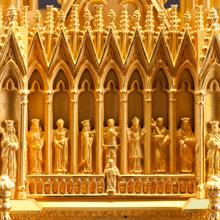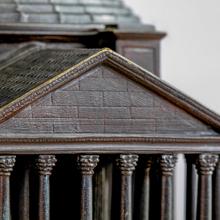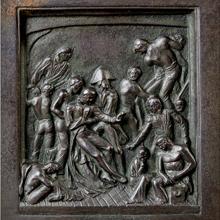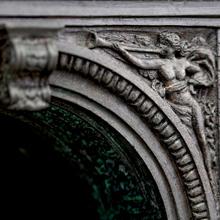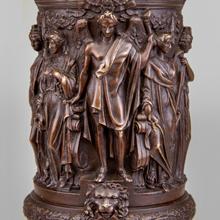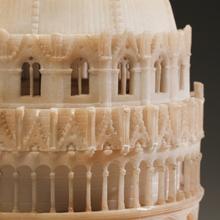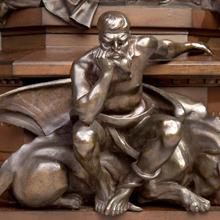Grand Miniatures: 19th Century Souvenir Buildings from the Collection of Ace Architects
Grand Miniatures: 19th Century Souvenir Buildings from the Collection of Ace Architects
“…to climb its (Colosseum) upper halls and look down on ruin, ruin, ruin, all about it; the triumphal arches of Constantine, Septimius Severus, and Titus; the Roman Forum; the Palace of the Caesars; the temples of the old religion, fallen down and gone; is to see the ghost of old Rome, wicked wonderful old city, haunting the very ground on which its people trod. It is the most impressive, the most stately, the most solemn, grand, majestic, mournful sight, conceivable.”
—Novelist Charles Dickens, Pictures from Italy, 1846
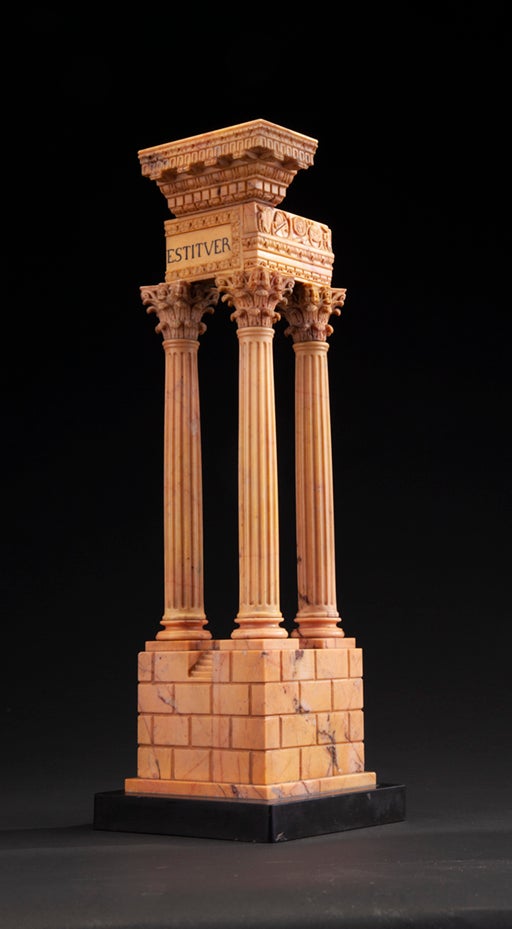 Early travelers on the Grand Tour followed a fairly standardized itinerary through France and Italy on their way south, and then north through Austria, Germany, and the Lowlands before returning to England. The trip was an educational rite of passage that typically lasted a year or more, with lengthy stays in Paris and Rome. Travelers returned with marble busts, paintings, prints, and other artifacts representing classical antiquity for display in their studies and libraries.Visiting another country for the sake of curiosity is a relatively modern idea. When Englishman Richard Lassels published an account of his travels through Italy in 1670, travel for any purpose other than business or religious pilgrimage was rare. During the seventeenth and eighteenth centuries, generations of wealthy young Englishmen followed Lassels’ advice that all “young lords” take “the Grand Tou” to better understand their world and prepare for their role in it.
Early travelers on the Grand Tour followed a fairly standardized itinerary through France and Italy on their way south, and then north through Austria, Germany, and the Lowlands before returning to England. The trip was an educational rite of passage that typically lasted a year or more, with lengthy stays in Paris and Rome. Travelers returned with marble busts, paintings, prints, and other artifacts representing classical antiquity for display in their studies and libraries.Visiting another country for the sake of curiosity is a relatively modern idea. When Englishman Richard Lassels published an account of his travels through Italy in 1670, travel for any purpose other than business or religious pilgrimage was rare. During the seventeenth and eighteenth centuries, generations of wealthy young Englishmen followed Lassels’ advice that all “young lords” take “the Grand Tou” to better understand their world and prepare for their role in it.
During the nineteenth century, the advent of mass transit made the Grand Tour accessible to greater numbers of travelers, including those crossing the Atlantic Ocean. In 1868, author Mark Twain publicized his own “great European pleasure excursion” in a popular series of dispatches written for the San Francisco newspaper that sponsored his trip. The Grand Tour became an increasingly American phenomenon with London as an important first stop for the relatively young country’s prominent writers, artists, and newly wealthy industrialists.
As the Grand Tour’s itinerary evolved, so too did the travelers’ keepsakes. Many of these miniatures document buildings as they existed only at a particular time in history. Others depict structures that no longer exist. Some are not true souvenirs, but were made singularly as project proposals or elaborate gifts. All the miniatures, however, convey the architectural essence of the buildings they represent. The objects also suggest the range of structures considered important to those nineteenth-century travelers to Europe wishing to return with a symbol of their cultural inheritance.
[inset image]
Temple of Vespasian and Titus, Rome c. 1870
Italy
marble, paint, marble base
Collection of Ace Architects
All objects are from the Collection of Ace Architects.
© 2010 by San Francisco Airport Commission. All rights reserved.
